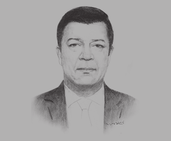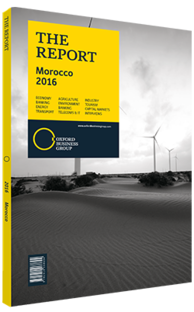Mohamed Aouzai, Governor, Urban Agency of Casablanca: Interview

Interview: Mohamed Aouzai
In what ways can improved urban planning help overcome the challenges facing the city?
Mohamed AOUZAI: There is a vision that we share with our local partners and civil society for an enhanced synergy in Greater Casablanca. This vision, which underpins the urban master plan – Schéma Directeur d’Amé nagement Urbain – seeks to build an inclusive, integrated and welcoming city, connected to the wider national and international environment, and where quality of life and the environment will be improved. This ambition also coincides with the 35 land use plans whose elaboration we are now about to complete. The main objective is to see the metropolis overcome its challenges, especially in terms of mobility and urban development, in order to succeed in positioning itself as a great international city.
The main guidelines define three metropolitan functions: tourism and leisure on the coast, service sector functions from Anfa-Sidi Maarouf to Mohammed V airport, and finally, the industrial and logistics functions between Mohammedia and Nouaceur built along an urban rail network similar to the Regional Express Network in Paris.
We are also focusing on rebalancing the east and west sides of Casablanca and shaping a strong relationship with neighbouring territories, which are part of the new region, while also looking for synergies with bordering zones like Had Soualem in the west, Berrechid in the south and Benslimane in the east.
How do you foresee the future growth of the city?
AOUZAI: Sustainable development in Casablanca cannot be achieved if we purely focus the on growth in the city centre. We need to reduce pressure on the downtown districts. In terms of land use the strategy is therefore to make the city grow into a larger territory, even beyond, and to address, in parallel, all the upgrading issues in the both the centre and the periphery. We are convinced that Casablanca cannot appropriately grow if the periphery’s issues are not tackled; this is why we are currently revamping urbanisation in the periphery through viable and accessible suburban centres that will, by 2030, attract most of the urban and demographic growth. During this period, the opening of nearly 25,000 ha to urbanisation is expected, which will benefit the development of nine integrated suburban centres connected to the city centre, where we will plan for appropriate densities, avoiding urban sprawl. These suburban centres are linked to each other and with the city centre by roads and railways. They have the necessary equipment to facilitate their own development without depending on Casablanca and Mohammedia.
What is the impact of the tram on mobility?
AOUZAI: For Greater Casablanca, mobility is a major issue. The tram is a solution, or more precisely, part of the solution. Its impact is certainly critical. The tram should eventually serve almost the whole city, and therefore improve the overall portfolio of public transport. Beyond its contribution to improving of the environment, it should eventually ensure the sharing of roads and public spaces, the upgrading of the urban landscape and the overhaul of crossroad systems and traffic plans. The first tram line, in service since December 2012, is an opportunity to revamp the urban landscape and enhance social inclusion through improving access. These positive aspects will incentivise Casablanca’s policy makers to roll out new lines. The upcoming urban rail network line and the revamping of other public transport, like buses and taxis, will significantly improve mobility.
How can walking and biking be encouraged?
AOUZAI: We try address this issue through land use policy and better transport, sometimes at the expense of cars, by creating mandatory and dedicated lanes for bikes and pedestrian-only crossings.
You have reached the limit of premium articles you can view for free.
Choose from the options below to purchase print or digital editions of our Reports. You can also purchase a website subscription giving you unlimited access to all of our Reports online for 12 months.
If you have already purchased this Report or have a website subscription, please login to continue.

